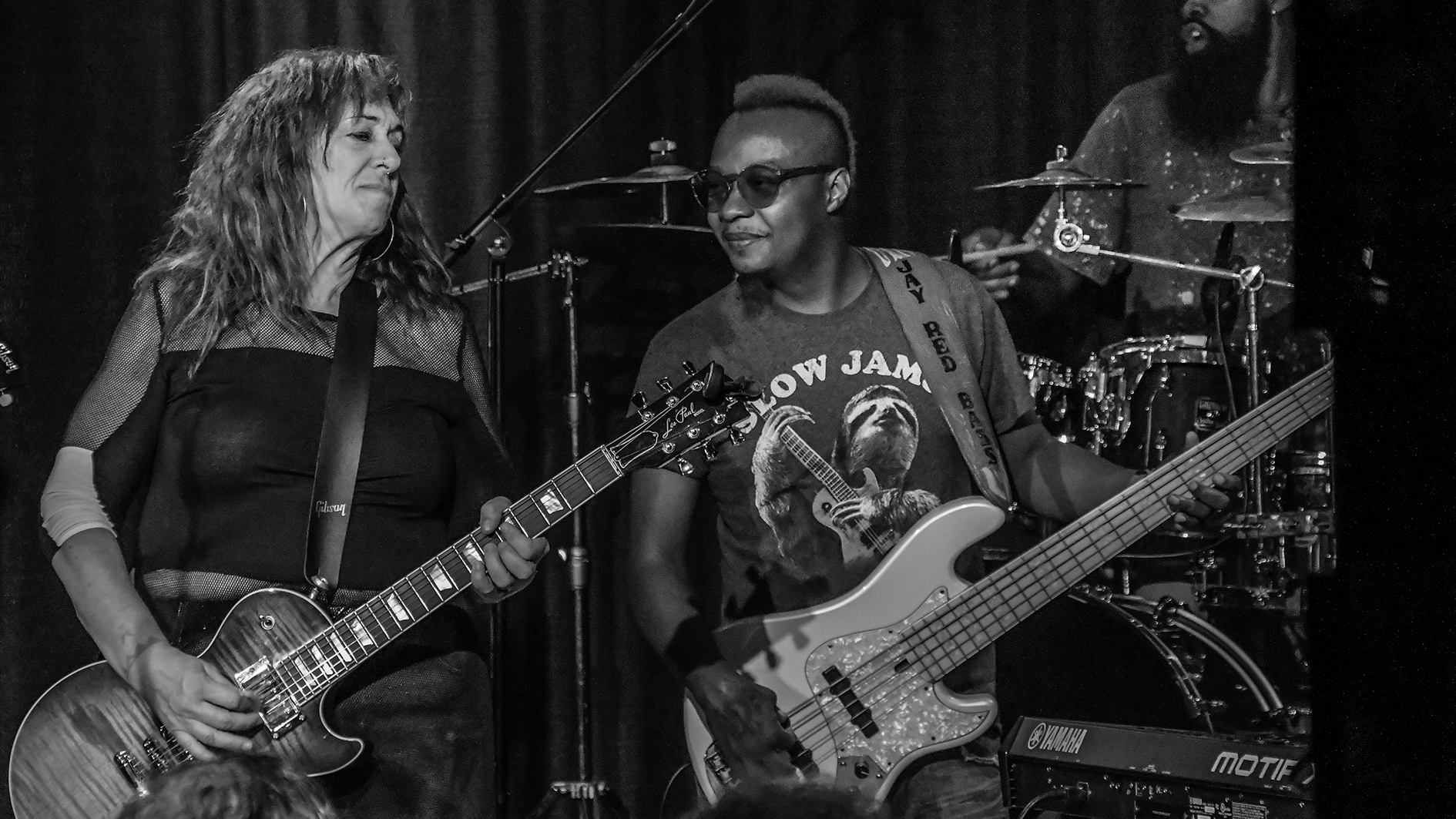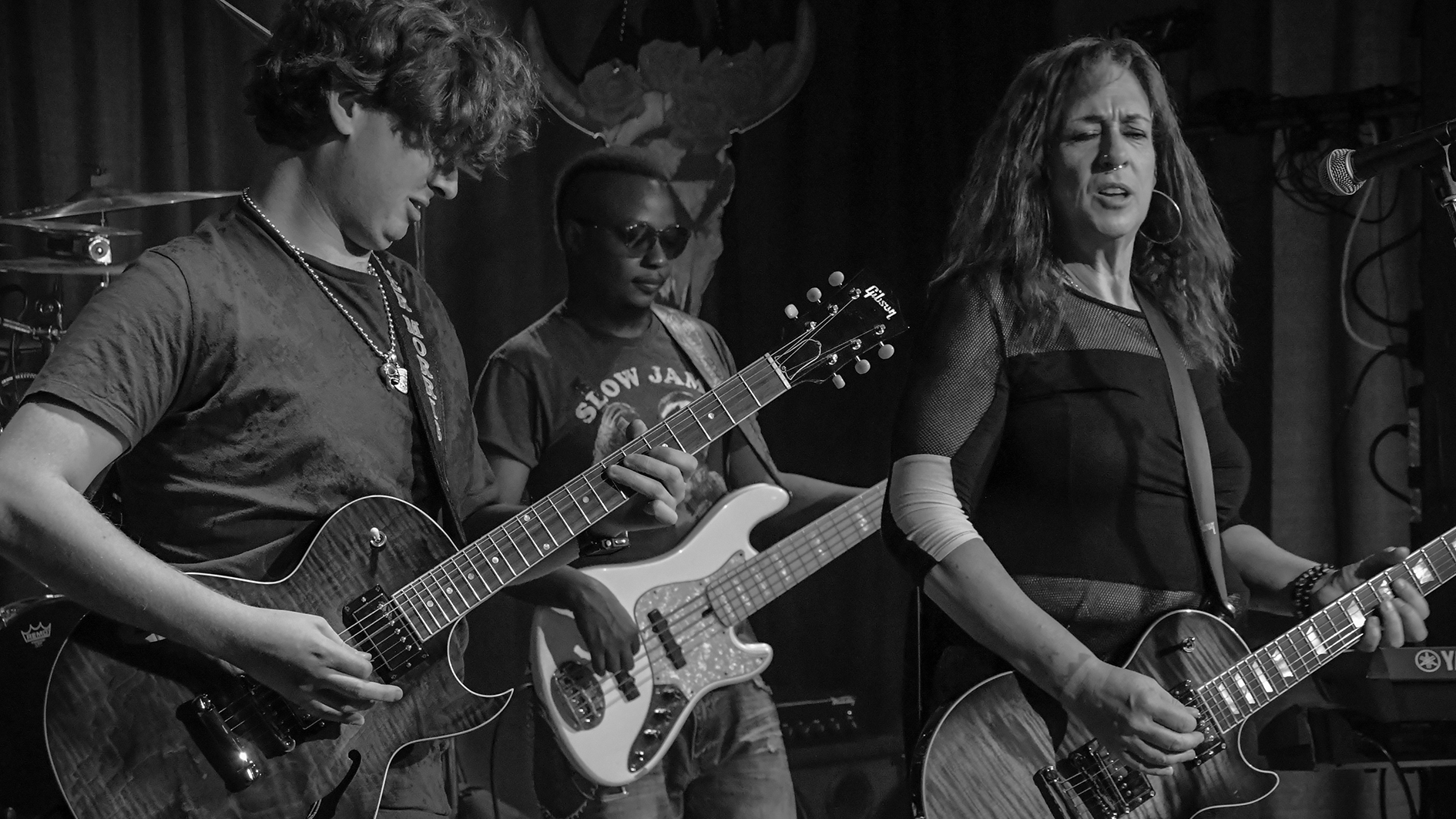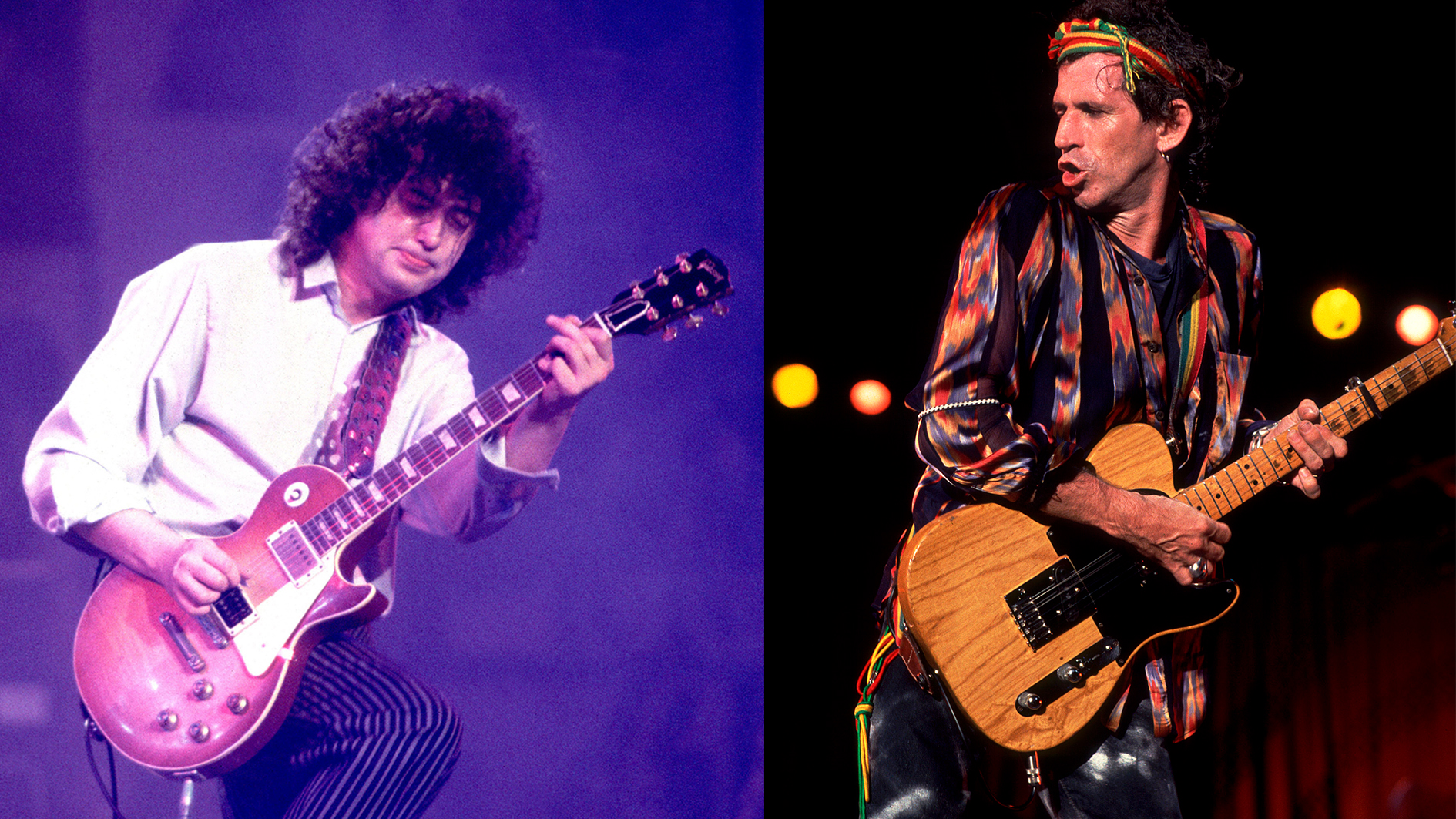Joanna Connor: "Nobody talks about my rhythm playing, but to me, it’s the best aspect of my guitar playing"
The Chicago-based blues guitarist on her love for Gibson and why the future is bright for young female guitar players

It seems fitting that Joanna Connor chose Rise as the title of her new album, as it’s been a year of transitions and new beginnings for the much-heralded, multifaceted artist. In addition to the music, she has a new band, new electric guitars, a new endorsement from Orange Amps, and even a new outlook.
Connor was born in Brooklyn and raised in Worcester, Massachusetts, where she began playing guitar at age 7 and saxophone as an adolescent. She played in jazz bands, and joined her first blues band as a teen, singing and playing electric guitar in clubs.
In 1984, she moved to Chicago and was soon sitting in with the legends: James Cotton, Buddy Guy, Junior Wells. She assembled her own band, and released her debut album, Believe It, in 1989. She toured relentlessly, including 32 treks across Europe over the course of a decade, recorded studio albums, released live albums, and then came to a sudden and surprising halt.
I do a lot of shows - solo, duo, acoustic, with the band - about 200 shows a year in total
In 2002, she gave up the road to focus on local club gigs and residencies, and area festivals, while raising her two children. The work never stopped, but the studio was an afterthought. Then came 2016’s Six String Stories, a return to the spotlight, and now Rise.
No one will ever accuse Connor of saturating the market with content. Six String Stories was her first album in over twelve years. Rise certainly didn’t take as long, but there was a three-year gap - practically a lifetime in the era of single-song downloads and artists feeling constant pressure to release singles and EPs in hopes of remaining in the public eye.
Connor has long been recognized as a blues artist, but Rise is so much more. It’s rich with scorching guitar solos and the slide work that she’s known for, but the material boldly ventures into jazz, rock, and even torch songs with her cover of Since I Fell For You, which also showcases her powerful voice.
What was going on during the time between Six String Stories and Rise? Obviously you did a lot of touring and press. What else?
Get The Pick Newsletter
All the latest guitar news, interviews, lessons, reviews, deals and more, direct to your inbox!
"I have standing gigs in Chicago, so I work four nights a week. I have the House of Blues and Kingston Mines, so it’s a real comfortable place to be, and the world kind of comes to you, because I’d say at least 50 percent of the people are tourists from around the world. So the motivation to get back out there… it’s good here, you know?
I consider my strongest point as being a musician onstage, improvising in the moment
"Also I work so much. I do a lot of shows - solo, duo, acoustic, with the band, 200 shows a year - and it keeps me really busy. That’s some of the reasons it took three years.
"And I’m not a prolific writer, although the past few months some kind of creative factory has been turned on, and that’s good. But I consider my strongest point as being a musician onstage, improvising in the moment. That’s where I’m most comfortable, and that’s where I spend most of my time and enjoy my time and space.
"With transitions in my life... I think we’re all working through things, developing ourselves, dealing with good things and trauma, just our lives in general, trying to be better people and more in touch with ourselves, and I feel like I’m finally knowing myself in my late 50s, so better late than never. So that’s part of the process of writing, too."

You were featured everywhere with Six String Stories. Did you take that with you when it was time to work on Rise, or was it, 'Forget all the accolades and attention; I'm starting from scratch and none of that matters?'
"Yeah, that’s pretty much how I live my life!"
Good philosophy.
"That's kind of how it goes, though. The last record was heavily influenced by my then-bass player/drummer Lance Lewis. He did a lot of work on it and did a great job and kind of got me to go back in the studio. This time it was really me and my current band, so it was a whole different energy flow.
"I have a large stock of original cover tunes, and they go into categories of like R&B, soul, funk, a little reggae, blues, blues rock, rock. Depending on the night, I can choose what I feel like playing according to the audience. That’s why, when I make records, there are so many different styles, because that’s what I bring to the table all the time.
"Sometimes, with agents or industry people, it's hurt me in some ways, especially a long time ago when there was more of a formula thing and it was, 'We don't know how to market you.' 'We don't know how to categorize you.' 'We don't know how to deal with you.' Well, this is me, you know, take it or leave it."
You've been playing the same Les Paul Classic 1960 reissue since 1990. How many guitars do you own?
I went to the NAMM Show way back when my first record came out, passed around a press kit, and one day Gibson called and I was like, 'What? Wow!' I always wanted to play a Gibson
"I have a few more now, thanks to Gibson! I’ve got a Les Paul Modern, which I've been playing a lot. I put my old guitar in a corner, which I played forever, but I love this new guitar. It’s a little lighter, it's got more options with tone, it’s got the pull-out knobs, and it’s really beautiful, so I'm enjoying it.
"But my other Les Paul is wonderful too. I picked up a couple of Strats, just to have, so I have four guitars. For most of my life I had two.
"I have a Gibson acoustic that they sent me, and a Dean acoustic-electric that I still play. I love that guitar. I bought it when I was teaching in a music store. I pulled it off the wall, tried it, and I was like, 'I’m buying this guitar.' I used that one and the Les Paul Classic on Rise."
You started out on Strats, correct?
"I did, on American Standards. I went to the NAMM Show way back when my first record came out, passed around a press kit, and one day Gibson called and I was like, 'What? Wow!' I had wanted to play a Gibson, and that's how that happened. After that, it became part of my body at that point."
What led to the endorsement with Orange Amps?
"They reached out to me in May after a video went viral that Joe Bonamassa and Vernon Reid and Tracii Guns started retweeting and saying all these nice things. I think that got their attention, and they said, 'You're amazing. We want to get you up on the roster here.'"
"I use a lot of transistor amps. I love tube amps, I’ve had them and they’re wonderful, but I just have trouble with them. I'd go on the road, next thing you know it’s not working, it needs a tube. So give me a transistor amp. They work. You turn it on and go.
"That’s what I have now, a Crush Pro 120. It’s a big sound with a lot of lovely lows and mids to it. The Les Paul is such a heavy guitar with the tone that I think it needs that room. I have 120 watts and it's not so much the loudness, but I need that head space, you know, keep it clean when I want it clean, and when I want to dirty it up, I use pedals. So I just think it has a really full, rich, warm sound."
Is it on the album?
"No, the album was recorded before the endorsement. I used a Vox AC30, a Victoria Twin model, and a Peavey Chorus 400 on that record."
How long did it take to track the guitars?
I feel like if you can't get it in two or three takes at the most, just leave it alone
"We started working on it last October [2018], picked up again in March, and completed it in June. I'm not big for going over and over and over stuff. I feel like if you can't get it in two or three takes at the most, just leave it alone.
"I did layer a lot of guitar parts. Some songs have five guitar parts on them, like a lot of little rhythm things. I took my time. We did it in four-hour blocks. Back in the day, you’d go in the studio for twelve hours or more. Now, four hours is the limit for me.
"I don't know exactly how many hours it took me. I took a lot more time than the guys did, but I don't like to get to the point where it becomes tedious. It has to feel fresh and spontaneous to me.
"My band - they’re such great musicians. They did all the tracks in a day, even stuff I had written that they had never heard, and most of them are one take. I don’t think we ever did more than three takes on anything, because they’re that good. They’re wonderful. And they’re good people, too."
How did you assemble this lineup?
"I’ve known my bass player, Jay Red, for years. He comes from a musical family, and he’s been a professional musician since he was a teenager. He started with Tyrone Davis, playing trombone, and he’s played with Snoop Dog, Mary J. Blige, he’s a heavy musician. He’s soulful and solid.
"In the blues scene, a lot of players know each other, so it’s a big family, and it overlaps the gospel scene. All the guys in my band play in church on Sundays. When my bass player, Lance Lewis, moved to Las Vegas last summer, I needed a bass player. I had done gigs with Jay and he was so good. He joined me in August of last year.
I couldn't figure out how to play a lead solo until was 22, so I spent years just being a rhythm guitar player
"When we went in the studio, I wanted a keyboard player, and I had seen him with Delby Littlejohn, so he got Delby in the studio, and he’s a wizard. He’s amazing. He didn’t gig a lot, so I offered him the job. He joined the band in March and he’s been a blessing. He brings so much to the table sonically.
"I had two drummers on the record, Tyrone Mitchell and Cameron Lewis, but the latest addition to the band is Jroc Edwards. He’s like a combination of both drummers and is a killer vocalist."
Where is your spot within the rhythm section? We hear about the pocket, but it’s always about the bass and drums working together. Where does the guitar sit?
"I couldn't figure out how to play a lead solo until was 22, so I spent years just being a rhythm guitar player. Nobody talks about my rhythm playing, but to me, it’s the best aspect of my guitar playing.
"That's my fun zone, too. If you give me a groove, I could give you five different rhythms right off the top of my head. It comes naturally to me. I love that part of playing. That’s my joy spot. And I feel like it's so crucial and so ignored by musicians and just people in general.
"The groove is everything. It makes everything happen. So when I get between a great bass player and a great drummer, oh, it’s go time! I love it."
What is the key to being a good rhythm player?
"There's so many different ways you can come at rhythm guitar and music. Rhythm is the glue to everything. I find ways where I can slot myself in-between the bass player and the drummer, or I choose parts of what the drummer is doing - let's say, what his hi-hat pattern is, what his ride cymbal pattern is, what his bass drum is doing - and I’ll play in unison with him, or I'll float in and out.
"I like to set a pattern when I play, and I focus on all those things, playing in unison with parts of the drum kit, or accenting with him, or complementing him. The same with the bass. There's so many little zones you can choose. Sometimes you find that one rhythm that drives the whole thing or just clicks perfectly.
"With chord voicings, it’s a more melodic approach. That’s another aspect of the patterns that you choose. To me, it's composing, because the patterns that you pick for rhythm - you're composing.
"If you think about the Rolling Stones, every single hit they ever had hinged off the incredible rhythm riffs on the guitar. It's iconic. Keith Richards is the master of that. The same with Jimmy Page. When he set up something with Led Zeppelin, those riffs he came up with, it’s the meat in the whole stew. So that's kind of my philosophy, too."

We keep hearing about increased sales of guitars to young women, and more young women picking up electric guitars. That must feel rewarding.
"Oh yeah. I mean, women have been fighting for things forever. But this new generation, like my daughter and her friends, and younger, they’re being whoever they feel like being, and I love it. They’re not categorizing themselves. They’re free to pursue what they want and not be boxed in, and it’s wonderful to see.
"A lot of blues crowds are older, but at Kingston Mines it’s a young crowd, which is nice. I get a lot of young women 30 and under - I call them my daughters - coming up to me, giving me hugs, and some of them play guitar and are like, 'You’re my hero!'
"It’s a cultural shift, and music always reflects the culture and leads the culture, so it’s kind of a double-edged sword thing. I’m really happy to see it."
Alison Richter is a seasoned journalist who interviews musicians, producers, engineers, and other industry professionals, and covers mental health issues for GuitarWorld.com. Writing credits include a wide range of publications, including GuitarWorld.com, MusicRadar.com, Bass Player, TNAG Connoisseur, Reverb, Music Industry News, Acoustic, Drummer, Guitar.com, Gearphoria, She Shreds, Guitar Girl, and Collectible Guitar.
“Elton said, ‘I'd better buy that guitar just to have in my house.’ I played it and said, ‘Yeah, you'd better buy it, so I can play it when I come by’”: One of Davey Johnstone's favorite guitars was once a piece of upscale decor for his superstar bandmate
“Leo said, ‘Here, try this guitar.’ I grabbed it, turned it around, held it upside-down backwards and started playing ukulele chords. He almost fell off his chair laughing”: How Dick Dale made the Stratocaster the ultimate surf-rock weapon









